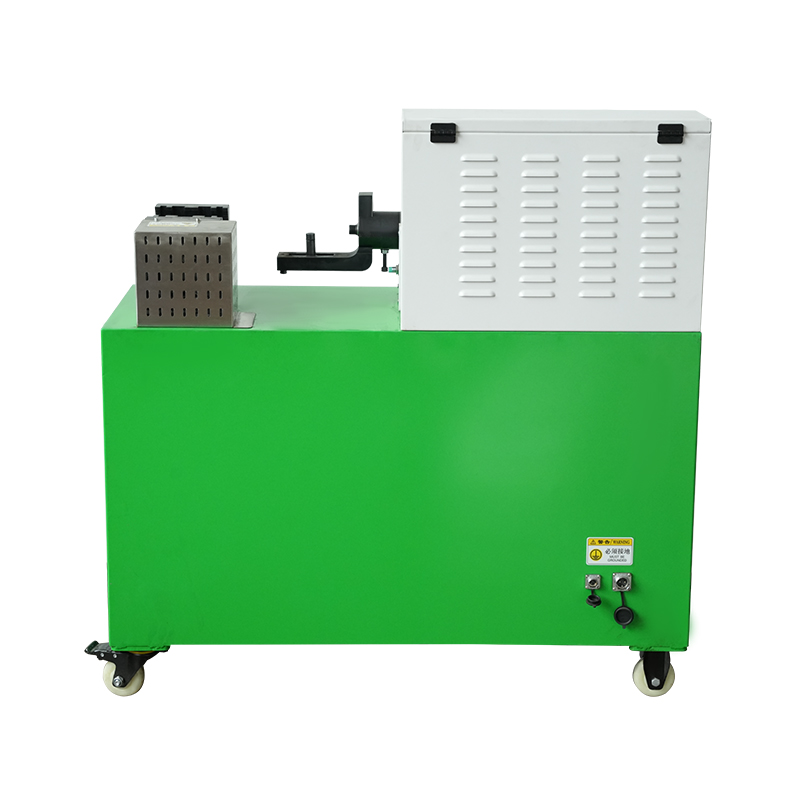Intelligent Threading Machine
1. Automatically identify the pipe diameter 2. Automatic tool adjustment and setting 3. Thread diameters from 15mm to 100mm 4. Threading time as lo...
See DetailsIn the realm of industrial manufacturing, automation has emerged as a cornerstone for improving productivity, precision, and cost-efficiency. The Intelligent Pipe Twisting Machine stands as a testament to this transformation, integrating advanced automation features that redefine pipe processing capabilities.
1. Automatic Feeding and Discharging: Streamlining Workflow
One of the most significant automation features of the Intelligent Pipe Twisting Machine is its ability to handle the entire pipe processing workflow with minimal manual intervention. The machine can be equipped with automated feeding systems that accurately position and feed pipes into the twisting mechanism. This eliminates the need for manual loading, reducing labor costs and minimizing the risk of human error.
Once the twisting process is complete, the machine automatically discharges the finished product, ready for the next stage of production or packaging. This seamless integration of feeding and discharging not only speeds up the production cycle but also ensures a consistent and uninterrupted workflow, essential for high-volume manufacturing environments.
2. Programmable Twisting Parameters: Ensuring Consistency and Precision
The Intelligent Pipe Twisting Machine offers users the flexibility to program precise twisting parameters, including torque, rotation speed, and twisting angle. This level of control is crucial for achieving consistent and high-quality results, especially when processing pipes with varying specifications or requirements.
By inputting specific parameters into the machine's control system, operators can ensure that each pipe is twisted exactly as needed, regardless of the batch size or complexity of the design. This precision is particularly valuable in industries such as automotive, aerospace, and construction, where even minor deviations can lead to significant quality issues or safety concerns.
3. Integration with MES (Manufacturing Execution System): Real-Time Data Monitoring and Optimization
In today's data-driven manufacturing landscape, the ability to monitor and analyze production processes in real-time is invaluable. The Intelligent Pipe Twisting Machine supports integration with MES, enabling seamless data exchange between the machine and the broader manufacturing ecosystem.

Through this integration, operators can monitor key performance indicators (KPIs) such as production rates, cycle times, and defect rates. They can also track the status of individual machines, receive alerts for potential issues, and optimize production schedules based on real-time data. This level of visibility and control allows manufacturers to make informed decisions, improve efficiency, and reduce waste.
4. Multi-Axis Simultaneous Twisting: Meeting Complex Design Requirements
For applications requiring complex pipe geometries or multi-bend designs, the Intelligent Pipe Twisting Machine offers multi-axis simultaneous twisting capabilities. This feature allows the machine to perform multiple twisting operations in a single pass, significantly reducing production time and improving accuracy.
By coordinating the movement of multiple axes, the machine can create intricate pipe shapes that would be difficult or impossible to achieve with traditional twisting methods. This capability is particularly useful in industries such as automotive exhaust systems, HVAC ducting, and oil/gas pipelines, where precise and consistent pipe bending is critical for performance and safety.
5. Adaptive Parameter Adjustment: Optimizing Performance in Real-Time
The Intelligent Pipe Twisting Machine goes beyond static parameter programming by incorporating adaptive parameter adjustment capabilities. Equipped with advanced sensors and feedback systems, the machine can continuously monitor the twisting process and make real-time adjustments to ensure optimal performance.
For example, if the machine detects variations in pipe material properties or dimensions, it can automatically adjust the torque or rotation speed to maintain consistent twisting results. This adaptive capability not only improves product quality but also reduces the need for manual intervention, saving time and resources.
6. Fault Diagnosis and Predictive Maintenance: Minimizing Downtime and Maximizing Uptime
Downtime due to machine failures or maintenance issues can be costly for manufacturers. The Intelligent Pipe Twisting Machine addresses this challenge by incorporating AI-driven fault diagnosis and predictive maintenance features.
The machine's control system continuously monitors various parameters, such as vibration, temperature, and power consumption, to detect potential issues before they cause a breakdown. If an anomaly is detected, the system can alert operators to take corrective action, such as adjusting parameters or scheduling maintenance.
Additionally, predictive maintenance capabilities allow the machine to anticipate upcoming maintenance needs based on usage patterns and historical data. This proactive approach helps manufacturers schedule maintenance during planned downtime, minimizing disruptions to production.
7. User-Friendly Interface: Empowering Operators with Intuitive Controls
Despite its advanced automation features, the Intelligent Pipe Twisting Machine is designed with operator ease-of-use in mind. The machine's control system features a user-friendly interface, typically a touch screen with intuitive menus and programmable settings.
This interface allows operators to quickly set up and monitor twisting operations, even without extensive technical training. Clear visual indicators and real-time feedback make it easy to adjust parameters, troubleshoot issues, and optimize performance. Additionally, the interface may support multiple languages, making the machine accessible to a global workforce.